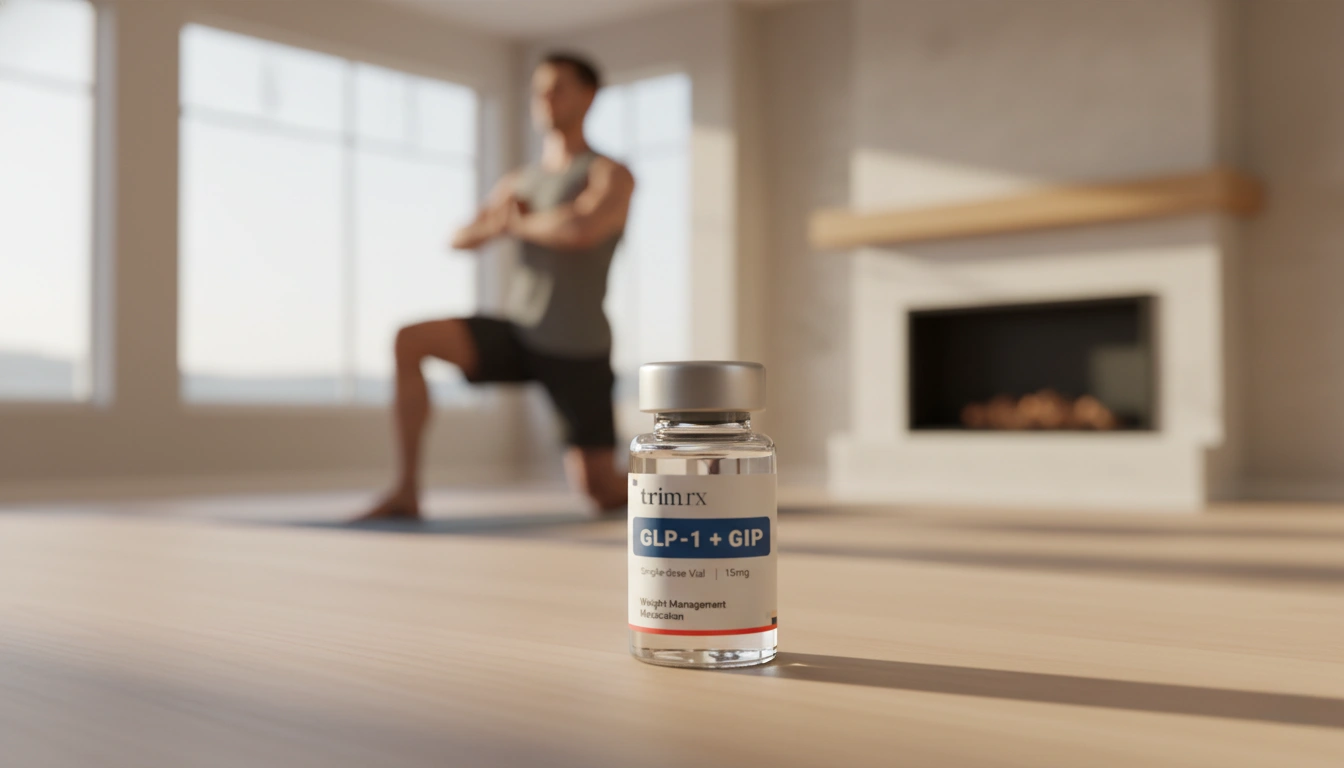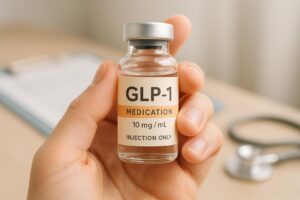Where to Inject GLP-1: A Comprehensive Guide to Safe and Effective Injection Techniques

Introduction
Did you know that more than 38 million Americans are living with diabetes, and a significant portion of them are turning to GLP-1 receptor agonists for effective management? As these medications, including semaglutide and tirzepatide, become increasingly popular for weight management and diabetes control, understanding the proper injection techniques is crucial for maximizing their benefits. In this blog post, we will delve deep into the best practices for injecting GLP-1 medications, specifically focusing on where to inject these medications, the techniques involved, and tips for ensuring a smooth experience.
At TrimRx, our mission is to empower individuals on their weight loss journey through personalized, medically supervised care that combines advanced scientific understanding with empathetic support. With the rise of GLP-1 medications in weight management, we recognize the importance of providing comprehensive information to help our clients utilize these medications effectively. By the end of this post, you’ll be equipped with the knowledge needed to confidently administer your GLP-1 injections.
Purpose and Scope of the Post
In this article, we will cover the following key aspects:
- Understanding GLP-1 Medications: A brief overview of what GLP-1 medications are and how they work.
- Choosing the Right Injection Site: Insights into the most effective areas for injection and the reasons behind these choices.
- Step-by-Step Injection Techniques: Detailed instructions on how to administer GLP-1 injections safely.
- Best Practices for Injection: Tips for minimizing discomfort and ensuring medication efficacy.
- Common Mistakes and How to Avoid Them: An overview of frequent errors made during the injection process and how to steer clear of them.
- Conclusion and Call to Action: A summary of key takeaways and an invitation to take our free assessment quiz to see if you qualify for our personalized weight loss programs.
Let’s embark on this journey together, ensuring that you feel informed and confident in administering your GLP-1 injections.
Understanding GLP-1 Medications
GLP-1 (glucagon-like peptide-1) receptor agonists are a class of medications designed to help individuals manage blood sugar levels and promote weight loss. These medications mimic the effects of the natural hormone GLP-1, which is produced in the intestines and plays a vital role in glucose metabolism, appetite regulation, and weight management.
How GLP-1 Medications Work
GLP-1 medications work by:
- Stimulating insulin secretion: They signal the pancreas to release insulin when blood sugar levels are elevated.
- Slowing gastric emptying: This helps to regulate the speed at which food leaves the stomach, promoting a feeling of fullness.
- Reducing appetite: By acting on the brain, GLP-1 medications can help decrease hunger and food intake.
The FDA has approved several GLP-1 medications, including semaglutide (marketed as Ozempic® and Wegovy®) and tirzepatide (Mounjaro®). At TrimRx, we offer personalized weight loss solutions that may include these medications, with a focus on safe and effective outcomes.
Choosing the Right Injection Site
Selecting the correct injection site is crucial for the effectiveness of GLP-1 medications. The preferred areas for subcutaneous injections include:
- Abdomen: Generally considered the optimal site for GLP-1 injections. Choose an area about two inches away from the belly button to avoid irritation.
- Thigh: The middle third of the outer thigh is a suitable area for injection. This site can be particularly beneficial if you’re more comfortable with leg injections.
- Upper arm: The back of the upper arm can also serve as a viable injection site. However, this may require assistance if you’re injecting yourself.
Why Site Selection Matters
Injecting GLP-1 medications into the recommended areas ensures that the medication is absorbed effectively. Each of these sites has a significant amount of subcutaneous fat, which aids in the slow absorption of the medication into the bloodstream. Additionally, rotating injection sites helps to prevent irritation and scarring.
Importance of Site Rotation
Rotating your injection sites is essential for minimizing complications such as lipohypertrophy, which can occur when injections are repeatedly given in the same spot. This condition can lead to inconsistent absorption of the medication. We recommend maintaining a log of your injection sites to help manage rotation effectively.
Step-by-Step Injection Techniques
Administering a GLP-1 injection may seem intimidating at first, but with the right preparation and understanding, it can be a straightforward process. Let’s break down the steps involved:
1. Gather Your Supplies
Before you begin, ensure that you have the following supplies ready:
- Your prescribed GLP-1 medication (vial or pre-filled pen)
- A syringe (if using a vial)
- Alcohol swabs for cleaning the injection site
- A sharps container for disposing of used needles
2. Prepare the Medication
If you’re using a vial:
- Check the expiration date: Ensure your medication is still effective.
- Wash your hands: Cleanliness is essential to prevent infections.
- Clean the rubber stopper: Use an alcohol swab to wipe the top of the vial before inserting the needle.
- Draw the medication: If using a syringe, draw air into the syringe first, then insert the needle into the vial, invert it, and pull back on the plunger to fill the syringe with the prescribed dose.
3. Prepare the Injection Site
- Clean the area: Use an alcohol swab to disinfect the chosen injection site. Allow it to dry completely before proceeding.
- Pinch the skin: Gently pinch a fold of skin at the injection site to facilitate easier insertion.
4. Administer the Injection
- Insert the needle: Hold the syringe at a 90-degree angle to your skin and insert the needle quickly into the pinch of skin.
- Inject the medication: Push the plunger down slowly to inject the medication. Keep the needle in place for 5-10 seconds to ensure the medication is fully delivered.
- Remove the needle: Pull the needle straight out at the same angle it was inserted.
5. Dispose of Used Materials
Immediately dispose of the used needle and syringe into a sharps container. Do not attempt to recap the needle to avoid accidental needle sticks.
Best Practices for Injection
To optimize your injection experience and ensure safety, consider the following best practices:
- Stay consistent: Administer the injections at the same time each week if your medication requires weekly injections.
- Monitor for side effects: Be aware of any local reactions such as redness or swelling at the injection site. If you experience severe reactions, consult your healthcare provider.
- Follow dosing instructions: Adhere to your healthcare provider’s instructions regarding dosage and frequency.
Common Mistakes and How to Avoid Them
Even with the best intentions, mistakes can happen. Here are some common errors to be mindful of and how to avoid them:
- Injecting at the wrong angle: Always insert the needle at a 90-degree angle to ensure it reaches the subcutaneous layer.
- Neglecting site rotation: Avoid injecting into the same area repeatedly. Keep track of where you’ve injected to ensure proper rotation.
- Skipping site cleaning: Always clean the injection site with an alcohol swab to minimize the risk of infection.
Conclusion
Effectively managing your health with GLP-1 medications begins with understanding the proper injection techniques. By choosing the right injection sites, adhering to best practices, and being mindful of common mistakes, you can enhance the efficacy of your treatment while minimizing potential complications.
At TrimRx, we are devoted to providing personalized weight loss solutions and ongoing support. If you’re interested in incorporating GLP-1 medications into your weight loss journey, we invite you to take our free assessment quiz to see if you qualify for our personalized treatment programs.
Remember, you’re not alone on this journey. Together, we can work towards achieving your health and wellness goals.
FAQ
What are GLP-1 medications used for?
GLP-1 medications are primarily used to manage blood sugar levels in individuals with Type 2 diabetes and to promote weight loss in those with obesity.
How often do I need to inject GLP-1 medications?
The frequency of injections varies depending on the specific medication. Some require weekly injections, while others may need to be administered daily.
Where should I inject GLP-1 medications?
The recommended injection sites include the abdomen, thighs, and upper arms. It’s important to rotate these sites to avoid irritation and tissue damage.
What should I do if I experience side effects?
If you notice any concerning side effects, such as severe redness or swelling at the injection site, or if you experience other adverse reactions, it’s important to contact your healthcare provider for guidance.
How can I ensure proper injection technique?
Following the step-by-step instructions provided in this guide, practicing cleanliness, and consulting with healthcare professionals can help ensure proper administration of GLP-1 injections.
By following these guidelines and understanding the ins and outs of GLP-1 injections, you can ensure that your journey toward better health and weight management is both safe and effective.

Transforming Lives, One Step at a Time
Keep reading
Tracking Progress With GLP-1: What To Measure
Learn which metrics to track on GLP‑1 therapy—weight, waist, blood sugar, lipids, side effects, and non‑scale wins—and how often to monitor them.
Fatigue Solutions for Ozempic and Wegovy Users
Hydration, protein-rich meals, light activity, and better sleep can reduce medication-related fatigue and help maintain energy during weight-loss treatment.
GLP-1 Medication Side Effect Checker
Worried about GLP-1 medication side effects? Use our free checker for Semaglutide, Liraglutide, and more to learn what to expect and stay informed!



